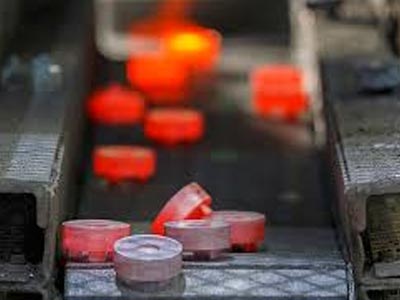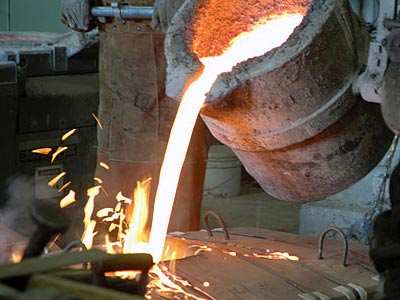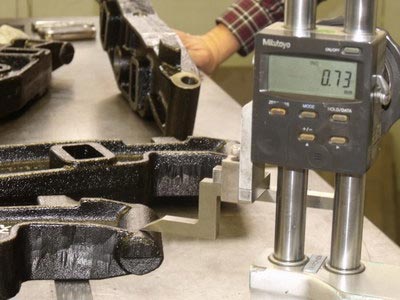
Wrought steel and cast steel are often confused by consumers and manufacturers, as they both belong to the broader category of iron-based alloys. However, they are fundamentally different in composition, manufacturing process, and properties. Understanding these differences is essential for choosing the right material for specific applications.
Wrought steel is typically produced by heating the metal and then shaping it using mechanical processes such as rolling, forging, or extrusion. This method allows for greater control over the final structure and properties of the material. On the other hand, cast steel involves melting the metal and pouring it into a mold where it solidifies into the desired shape. This process is ideal for creating complex shapes that would be difficult to achieve through traditional forming methods.
Wrought steel is known for its high ductility, which means it can be easily shaped without breaking. It has a lower carbon content compared to cast iron, making it more malleable and easier to work with. One of the key advantages of wrought steel is its improved strength when subjected to mechanical working. It also offers excellent weldability, flexibility, and tensile strength, making it suitable for applications that require durability and resilience under harsh conditions.
- Excellent welding properties allow for easy shaping and joining of components.
- High flexibility and ductility make it ideal for applications requiring bending or forming.
- Offers high tensile strength and durability, especially in demanding environments.
- Easy to forge, enabling the production of intricate designs.
Cast steel, on the other hand, contains a higher percentage of carbon (typically between 2.0% and 4.0%) and includes elements like manganese and silicon. This composition gives it superior hardness and strength but reduces its ductility. The casting process involves melting the metal, pouring it into a mold, and allowing it to cool and solidify. While cast steel is harder and less malleable than wrought steel, it is often used in industrial applications where high strength and wear resistance are required.
Cast steel is widely used in the manufacturing of cookware, machinery parts, and construction materials. Its advantages include high compressive strength, good machinability, and excellent wear resistance. These properties make it suitable for heavy-duty applications, especially when enhanced with alloying elements like chromium or molybdenum.
- High compressive strength provides resistance to pressure and deformation.
- Good durability and toughness, which can be further improved with heat treatment or alloying.
- Excellent machinability, allowing for precise shaping through cutting, drilling, and grinding.
- Good wear resistance, ideal for use in harsh environments.
Table of contents
- Difference between wrought steel and cast steel
- Heat Treatment of cast steel
- Advantages and Disadvantages of cast iron steel
- Advantages of wrought iron
- Puddling process vs Metal Casting process
- Types of cast iron
- Properties of 4140 cast steel
- Chemical composition of Cast iron
- Cast Iron mechanical properties
- AISI 4140 Heat Treatment
- Wrought Iron chemical composition
- Wrought Steel mechanical properties
- Inspection and Testing of Cast steel
- Manufacturing process of 4340 steel casting
- Cast steel valves temperature range
- Difference between Wrought Iron and Steel
- Surface finish of Cast iron parts
Difference between wrought steel and cast steel
| Wrought Iron |
Cast Iron |
| It is iron that has been heated and then worked with tools. |
It is iron that has been melted, poured into a mold, and allowed to solidify. |
| It is brittle |
It is ductile |
| Higher tensile strength |
Lower tensile strength compared to Wrought Iron |
| Low melting point |
High melting point |
| It is difficult to weld |
It is easily welded |
Right technique for welding cast steel, check 4140/ 4340 Steel Heat Treatment and Casting hardness
Heat Treatment of cast steel
- Annealing
- Precipitation Strengthening
- Tempering
- Case Hardening
- Normalising
- Quenching
Refer advantages of Cast and Wrought Steel products
Advantages and Disadvantages of cast iron steel
Advantages
- Cast iron has excellent fluidity after melting
- High Wear Resistance
- Excellent Machinability
- Compression Strength
- Low Cost
Disadvantages
- It is relatively brittle and may fracture
- Very easily get rusted
- It is relatively heavy
Advantages of wrought iron
- Increased ductility
- Excellent weldability
- Easily forged
- High tensile & compressive strength
- Enhanced malleability
Check difference between puddling of cast iron and Metal Casting process
Puddling process vs Metal Casting process
The puddling process involves converting pig iron into wrought iron by heating and stirring it in a furnace without using charcoal. This was an early method for producing wrought iron in large quantities. In contrast, the metal casting process involves melting metal and pouring it into a mold to create the desired shape. This method is ideal for complex designs that cannot be easily formed using traditional techniques.
Types of cast iron
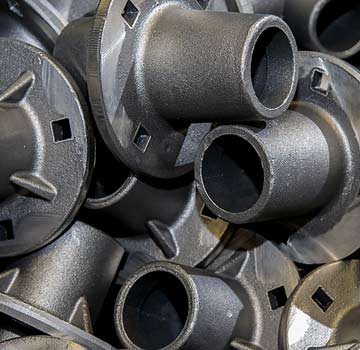
Gray Cast Iron

Ductile Cast Iron
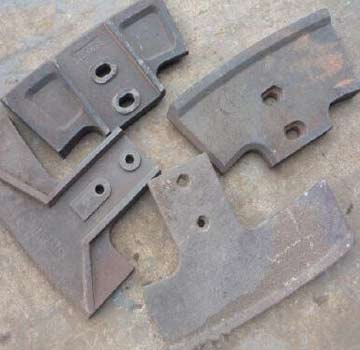
White Cast Iron
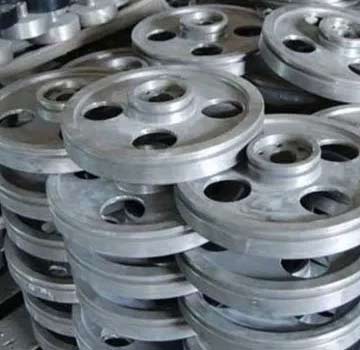
Malleable Cast Iron
Properties of 4140 cast steel
- Hardness
- Ductility
- Wear resistance
- Corrosion resistance
- Toughness
- Strength
- Machinability
- Weldability
- Low-temperature properties
- High-temperature properties
Types of Cast Steel material, check grades, composition, and density in kg/m3
Chemical composition of Cast iron
| ASTM |
Chemical Requirements |
| STEEL GRADE |
Carbon |
Manganese |
Silicon |
Sulfur |
Phosphorus |
| Max % / Range |
| ASTM A27 / A27M |
| Grade N-1 |
0.25 |
0.75 |
0.80 |
0.06 |
0.05 |
| Grade N-2 |
0.35 |
0.60 |
0.80 |
0.06 |
0.05 |
| Grade U60-30 |
0.25 |
0.75 |
0.80 |
0.06 |
0.05 |
| Grade 60-30 |
0.30 |
0.60 |
0.80 |
0.06 |
0.05 |
| Grade 65-35 |
0.30 |
0.70 |
0.80 |
0.06 |
0.05 |
| Grade 70-36 |
0.35 |
0.70 |
0.80 |
0.06 |
0.05 |
| Grade 70-40 |
0.25 |
1.20 |
0.80 |
0.06 |
0.05 |
| ASTM A148 / A148M |
| Grade 80-40 |
N/A |
N/A |
N/A |
0.06 |
0.05 |
| Grade 80-50 |
N/A |
N/A |
N/A |
0.06 |
0.05 |
| Grade 90-60 |
N/A |
N/A |
N/A |
0.06 |
0.05 |
| ASTM A216 / A216M |
| Grade WCA |
0.25 |
0.70 |
0.60 |
0.045 |
0.04 |
| Grade WCB |
0.30 |
1.00 |
0.60 |
0.045 |
0.04 |
| Grade WCC |
0.25 |
1.20 |
0.60 |
0.045 |
0.04 |
Cast Iron mechanical properties
| ASTM |
Mechanical Properties |
| STEEL GRADE |
Tensile Strength |
Yield Point |
Elongation in 2 in. |
Reduction of Area |
| Min. ksi [Mpa] / Range |
Min. % |
| ASTM A27 / A27M |
| Grade U60-30 |
60 [415] |
30 [205] |
22 |
30 |
| Grade 60-30 |
60 [415] |
30 [205] |
24 |
35 |
| Grade 65-35 |
65 [450] |
35 [240] |
24 |
35 |
| Grade 70-36 |
70 [485] |
36 [250] |
22 |
30 |
| Grade 70-40 |
70 [485] |
40 [275] |
22 |
30 |
| ASTM A148 / A148M |
| Grade 80-40 |
80 [550] |
40 [275] |
18 |
30 |
| Grade 80-50 |
80 [550] |
50 [345] |
22 |
35 |
| Grade 90-60 |
90 [620] |
60 [415] |
20 |
40 |
| ASTM A216 / A216M |
| Grade WCA |
60-85 [415-585] |
30 [205] |
24 |
35 |
| Grade WCB |
70-95 [485-655] |
36 [250] |
22 |
35 |
| Grade WCC |
70-95 [485-655] |
40 [275] |
22 |
35 |
AISI 4140 Heat Treatment
| Soft annealing °C |
Cooling |
Hardness HB |
| 650-700 |
slowly |
max. 280 |
| Stress-relief annealing °C |
Cooling |
| 630 – 650 |
Furnace |
| 1st pre-heating °C |
2nd and 3rd |
Hardening °C |
Quenching |
Tempering °C |
Hardness after Teperature HRC |
| up to approx. 400 in an air-circulating furnace |
780 and 1000 |
1190 – 1230 |
Saltbath, at least 520 °C Oil ,Air |
at least twice 530-560 |
64 – 66 |
Wrought Iron chemical composition
| Element |
Iron, Fe |
Carbon, C |
Phosphorus, P |
Silicon, Si |
Sulfur, S |
Manganese, Mn |
| Content (%) |
99-99.8 |
0.05-0.25 |
0.05-0.2 |
0.02-0.2 |
0.02-0.1 |
0.01-0.1 |
Wrought Steel mechanical properties
| Properties |
Imperial |
Metric |
| Tensile strength |
34000-54000 psi |
234-372 MPa |
| Modulus of elasticity |
28000 ksi |
193100 MPa |
| Yield strength |
23000-32000 psi |
159-221 MPa |
Inspection and Testing of Cast steel
- Dimensional accuracy
- Surface finish condition
- Internal soundness
- Chemical analysis
- Heat analysis
- Tensile properties
- Impact properties
- Hardness
Manufacturing process of 4340 steel casting
- Furnace charging
- Melting
- Refining
- De-slagging
- Tapping (or tap out)
- Furnace turn-around
Refer cast steel valves uses and temperature limit
Cast steel valves temperature range
| Temperature range |
-29°C to 425°C |
Difference between Wrought Iron and Steel
| Characteristics |
Wrought Iron |
Steel |
| Carbon content |
0.08% |
4% |
| Tensile Strength |
Very good tensile strength |
Greater tensile strength |
| Workmanship |
Requires less workmanship. |
Requires more craftsmanship than wrought iron |
Surface finish of Cast iron parts
- Shot Blasting
- Painting
- Powder Coating
- Electroplating
UV Curing Adhesive
Uv Curing Adhesive,Uv Curing Glass Adhesive,Special Uv Curing Adhesive,Uv Curing Optically Adhesive
Guangdong Shengtang New Material & Technology Co.,Ltd. , https://www.shengtang-silicone.com

